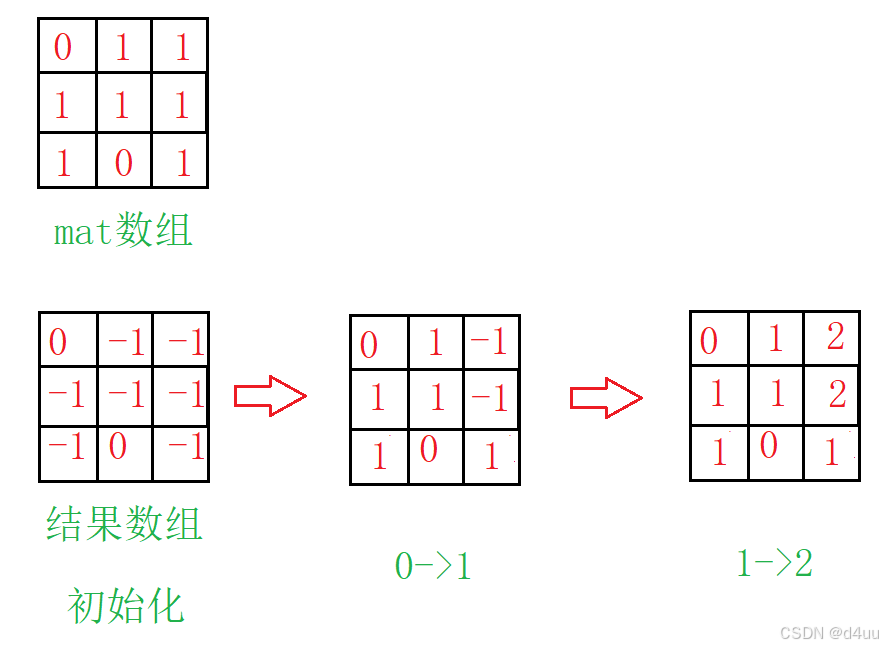题目链接: 01 矩阵
多源BFS类型题, 即给定多个起点, 判断从哪个起点走到终点距离最短, 一般解题思路为将所有起点看成一个"起点", 由此"起点"做bfs得到题解, 实际代码编写将所有起点都入队列, 每次都对所有起点做一层扩展.
题解思路:
从1往0处走寻找最短距离不好操作, 逆向思维从0往1处走, 这样很好更新最短距离, 如图:

第一层的值为0, 那么扩展后的值就是0+1
第二层的值为1, 那么扩展后的值就是1+1
题解大致步骤:
-
定义方向数组.
-
定义一个与mat同等规模的二维数组, 将其初始值设为-1, 当数组对应坐标的值为-1时表示当前位置未被访问过, 当数组对应坐标的值不为-1时则表示该坐标到0的最短距离.
-
定义一个存储pair<int,int>的队列, 并将mat数组中0的坐标入队, 同时将步骤2定义的数组的同等坐标位置的值置为0.
-
做一次多源bfs, 每次取队头的值向四周扩一次, 并根据条件更新队列和步骤2的数组, 最后步骤2的数组就是题解, 返回即可.
题解代码:
cpp
class Solution
{
public:
vector<vector<int>> updateMatrix(vector<vector<int>>& mat)
{
//方向数组
int dx[4] = {0, 0, -1, 1};
int dy[4] = {1, -1, 0, 0};
int row = mat.size();
int col = mat[0].size();
vector<vector<int>> res(row, vector<int>(col, -1));
queue<pair<int,int>> q;
//添加0的坐标到q
for(int i = 0; i < row; ++i)
{
for(int j = 0; j < col; ++j)
{
if(mat[i][j] == 0)
{
q.push({i, j});
res[i][j] = 0; //同时修改结果数组
}
}
}
//多源bfs
while(q.size())
{
auto [a, b] = q.front();
q.pop();
for(int j = 0; j < 4; ++j)
{
int x = a + dx[j];
int y = b + dy[j];
if(x >= 0 && x < row && y >= 0 && y < col && res[x][y] == -1)
{
q.push({x, y});
res[x][y] = res[a][b] + 1;
}
}
}
return res;
}
};